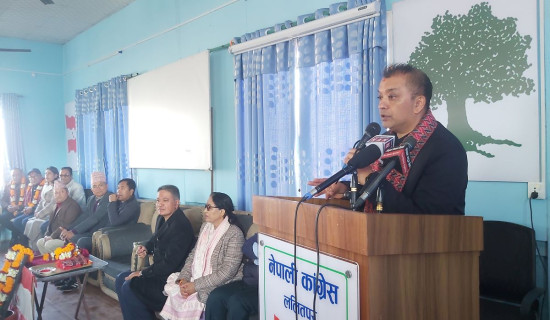- Monday, 15 December 2025
Remembering The Nation's Unifier
When we look at the historical background of the boundary of Nepal, Prithvi Narayan Shah had initiated a campaign to unify small kingdoms and principalities of the Himalayan region in 1744 AD. After the annexing of the Kathmandu Valley, he unified other smaller kingships south of the valley to keep out the influence and control of the British rule.
After his kingdom spread out from north to south, he made Kantipur the capital of the expanded country, and called it 'Nepal' instead of 'Gorkha'. As a result, Prithvi Narayan Shah formally established Nepal as a Himalayan nation and thus, Nepal was born on 16 November 1769.
If Shah had not started to unify various principalities of the Himalayan region, it would have been fallen into the British domination. So, we have to remember Shah's contribution that formed a single nation Nepal. Before his death, he had expressed his Upadesh or thoughts of wisdom that are still relevant in the context of economic activities, security, diplomacy and protection of the boundaries.
Diplomatic vision
Last year, President Bidya Devi Bhandari's greeting message given on the occasion of Prithvi Jayanti and National Unity Day on January 11 stated, 'The thought given by Prithvi Narayan Shah at that time is equally relevant in the current context.' On the occasion, she placed flowers and garlands on the statue in front of the main gate of Singha Durbar. As a remembrance of his unification work, the government had given a public holiday on January11 last year across Nepal and to Nepali embassies and diplomatic missions abroad. It has been decided to give a holiday this year as well.
If we talk about Prithvi Narayan's vision, his diplomatic essence was that Nepal should be protected from the interference of both the northern and southern neighbours. He said, 'Nepal is like a yam between two boulders. Keep friendship with the Emperor of China. At the same time, it is necessary to make a strong friendship also with the Emperor of the South. But he is very clever. He is occupying Hindustan and he is eyeing the plain area of Nepal also.'
It is a vital motto of diplomacy for Nepal that if it inclines to one neighbour, there is a possibility that it may harm Nepal. Nepal has to walk on a razor's edge. If Nepal slips from the razor edge to the south, it will come under its umbrella. If it is slipped to the north, Nepal will be influenced by their ideology.
Four years ago, our southern neighbor published the 'Political Map of India' and included 372 square kilometres of area of Limpiyadhura-Kalapani-Lipulek region within their territory, which is the sovereign land of Nepal. Nepal responded and called for talks. But India was not ready. Therefore, Nepal published the Chuche Naksa three years ago.
China published a new map on August 11, 2023. But it did not depict the Chuche Naksa of Lipulek-Kalapani-Limpiyadhura region of Nepal. It is due to the fact that Nepal did not send the Chuche Naksa to China, nor to India and the United Nations. Had the vision of Prithvi Narayan been executed, China would have incorporated Nepal's Chuche Naksa to its new map.
PN Shah had expressed his vision that 'Prepare forts on the boundaries on both northern and southern sides. Construct seven strong forts around Chaar Bhanjyang (Kathmandu Valley) in Shivapuri, Phulchoki, Chandragiri, Mahadevpokhari, Palung, Dapcha, and Kahule Bhanjyang.'
'Install cannons in a ready position in a row in all forts. Build iron gates in all crossings and keep a cannon in each gate in a ready condition and depute five soldiers each over there. If we could do so, any person involved in watching our activities, talking against us, thinking of committing crime and causing damage to anyone, spying on the people and the criminals will also be unable to do any harm. And even all the Four Emperors do attacked us, they would be defeated.' If we make such strategies, they will easily be defeated at the crossings of the Chure hills. If we could do so, we will be able to extend our boundaries up to the Sriganga River,' the great unifier said.
Relevance
Prithvi Narayan Shah's thoughts, sayings, or ideas are the foundation of Nepali nationalism and the soul of the nation. Even at the present time when political leaders lack a sense of stability and a balance of power, they must remember Prithvi Narayan's vision of unification. If the scattered ideas of the current political leaders are unified, the graph of overall prosperity of Nepal would go up.
The main crux is that whatever vision Prithvi Narayan Shah had at that time, is equally relevant even today, after three centuries. The manner in which he described Nepal as a 'yam between two boulders' and the balanced relationship between the neighbors is still admirable today. Therefore, in the current situation, it is appropriate to look at Prithvi Narayan Shah from a historical point of view. He deserves honour him as he unified the small kingdoms into a strong nation. On the basis of his contribution to the nation, it is relevant to remember him in order to develop Nepal further and protect nationality, sovereignty and territorial integrity.
(The author is an expert on border issues.)
















